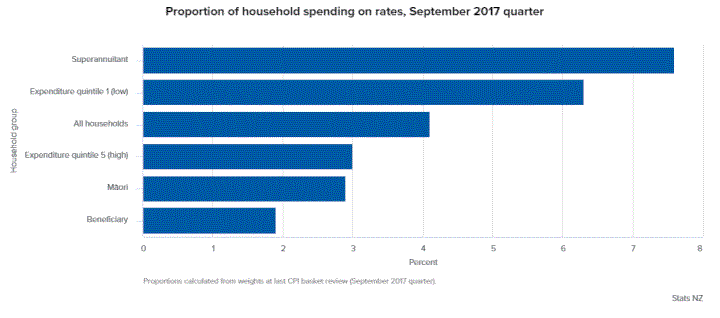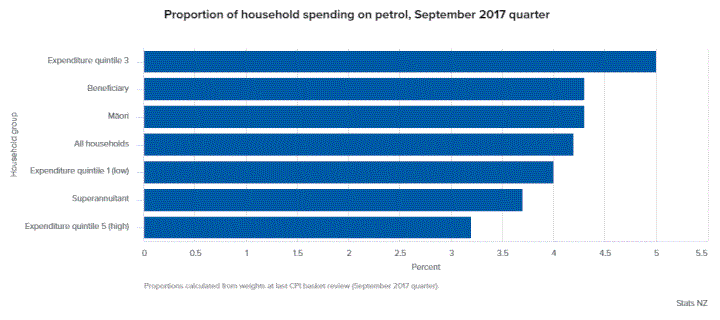Superannuitants feel effects of rates rises
Superannuitants feel effects of rates rises – Media release
26 October 2018
Superannuitants faced the highest inflation in the September 2018 quarter (up 1.2 percent), largely driven by a 5.6 percent rise in local authority rates, Stats NZ said today.
Of the different household groups measured by Stats NZ, superannuitants were hit hardest by rates rises, while beneficiaries were affected least.
“As a proportion of their expenditure, superannuitants spend four times as much on local authority rates as beneficiaries,” consumer prices manager Geraldine Duoba said. “Beneficiary households tend to live in rented homes, so are less likely to be affected by rates increases directly.”

Along with local authority
rates, price rises for vegetables (up 11 percent), petrol
(up 5.0 percent), and dwelling insurance (up 4.4 percent)
were the main contributors to inflation for
superannuitants.
The highest-spending households saw the lowest inflation this quarter, up 0.7 percent. They were affected by price rises for petrol, vegetables, and local authority rates. However, price falls for mortgage interest payments, fruit, and telecommunication equipment helped keep inflation low for these households.
Petrol pushes annual inflation up for all households
The biggest contributor to annual inflation for all households in the year to September 2018 was higher petrol prices. The only exception was beneficiaries, who were more affected by rent increases.
“Middle-spending New Zealanders were hit hardest by rising petrol prices, while the higher-spending households and superannuitants weren’t as affected,” Ms Duoba said.

Vegetables showed an annual
decrease as they returned to more typical price levels after
the poor weather in 2017. This helped keep inflation low for
all households, as did the decrease in tertiary education
resulting from the Government’s fee-free first-year
policy. The latter policy was reflected most in the
highest-spending households, who saw the lowest annual
inflation (up 1.9
percent).
Ends


 Gordon Campbell: On Why We Can’t Survive Two More Years Of This
Gordon Campbell: On Why We Can’t Survive Two More Years Of This Peace Action Ōtautahi: Bridge Of Remembrance Peace Protest
Peace Action Ōtautahi: Bridge Of Remembrance Peace Protest National Wetland Trust: Public Asked To Help Prevent Fires In Wetlands This Summer
National Wetland Trust: Public Asked To Help Prevent Fires In Wetlands This Summer Lillian Hanly, RNZ: The Year In Politics - Stories That Dominated The Headlines In 2024
Lillian Hanly, RNZ: The Year In Politics - Stories That Dominated The Headlines In 2024 Waikato Regional Council: Studies Open Door To Mercury Islands Underwater World
Waikato Regional Council: Studies Open Door To Mercury Islands Underwater World Office of the Privacy Commissioner: Christmas Is About Giving, But Don’t Give Up Your Privacy
Office of the Privacy Commissioner: Christmas Is About Giving, But Don’t Give Up Your Privacy The Rail Advocacy Collective: Chris Trotter - Running Us Off The Rails
The Rail Advocacy Collective: Chris Trotter - Running Us Off The Rails


